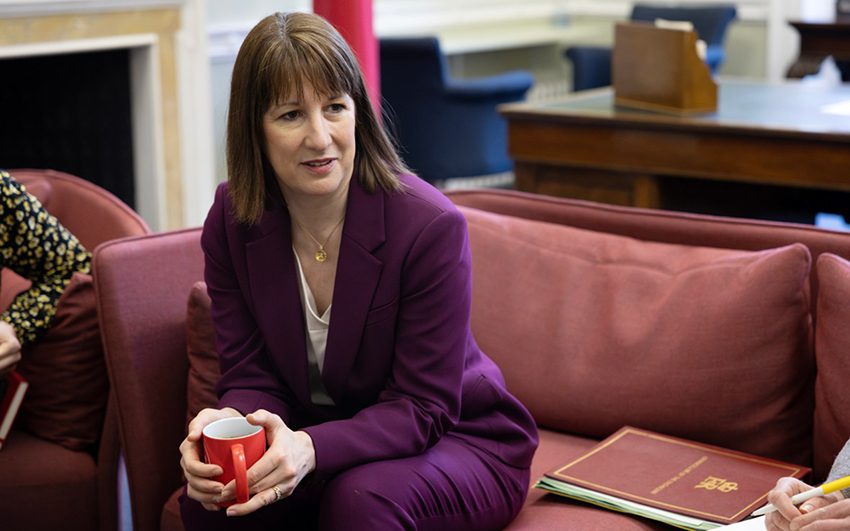LGBTQ+ youth see content creators—and even AI chatbots—as social lifelines, survey finds
Social media and the internet are getting the blame for much of the youth mental health crisis, but for LGBTQ+ youth they may provide an important source of social connection. Hopelab, a company that invests in improving youth mental health, surveyed more than 1,500 LGBTQ+ teenagers and young adults ages 13 to 22. (The study does not have data on how the group’s social media behaviors compare to non-LGBTQ+ youth.) The organization found that social media, AI chatbots, and parasocial relationships (one-sided relationships with celebrities or fictional characters) may offer important opportunities for connection and support. Here are the key highlights: The internet creates opportunities for parasocial relationships More than half of respondents said they use the internet several times a day, 36% almost constantly. More than 60% of respondents said they’ve interacted with their favorite content creator and 38% said they’ve received a reply. In general, respondents favored niche content creators over mainstream celebrities. Parasocial relationships are important to LGBTQ+ youth Nearly 40% of LGBTQ+ youth reported strong engagement with a media figure. Some 54% reported having strong parasocial support, meaning they trust a media figure and perceive them as helpful. That feeling of connection may help with embracing their identity—62% of trans respondents who reported strong parasocial support also reported having strong trans pride compared to 46% with low parasocial support. LGBTQ+ youth are on the fence about AI chatbots Some 40% of respondents said they’ve talked to an AI chatbot over several days as if it were a friend, but 44% said they would not be open to talking with an AI chatbot. Talking to a chatbot as if it were a friend was most common among males versus females (50% vs. 43%), and more widespread among trans and nonbinary respondents than cisgender (53% vs. 42%). Respondents in rural areas used them more than those living in suburban and urban areas (42% vs. 37%). In follow-up interviews, respondents noted that chatbots always respond to messages. However, they felt that over time chatbots worsened social skills because they felt chatbots allow people to avoid having difficult conversations. Interviews with people taking the survey revealed an overall desire for connection with other LGBTQ+ youth, especially among those with families who aren’t accepting of their sexuality or gender identity. “I feel like I’m hated less online than [in] my own house because of my gender, and it’s crippling,” one trans interviewee told Hopelab. “I feel more accepted by people online who are trans like me than my own family.”

Social media and the internet are getting the blame for much of the youth mental health crisis, but for LGBTQ+ youth they may provide an important source of social connection.
Hopelab, a company that invests in improving youth mental health, surveyed more than 1,500 LGBTQ+ teenagers and young adults ages 13 to 22. (The study does not have data on how the group’s social media behaviors compare to non-LGBTQ+ youth.)
The organization found that social media, AI chatbots, and parasocial relationships (one-sided relationships with celebrities or fictional characters) may offer important opportunities for connection and support. Here are the key highlights:
The internet creates opportunities for parasocial relationships
More than half of respondents said they use the internet several times a day, 36% almost constantly. More than 60% of respondents said they’ve interacted with their favorite content creator and 38% said they’ve received a reply.
In general, respondents favored niche content creators over mainstream celebrities.
Parasocial relationships are important to LGBTQ+ youth
Nearly 40% of LGBTQ+ youth reported strong engagement with a media figure. Some 54% reported having strong parasocial support, meaning they trust a media figure and perceive them as helpful.
That feeling of connection may help with embracing their identity—62% of trans respondents who reported strong parasocial support also reported having strong trans pride compared to 46% with low parasocial support.
LGBTQ+ youth are on the fence about AI chatbots
Some 40% of respondents said they’ve talked to an AI chatbot over several days as if it were a friend, but 44% said they would not be open to talking with an AI chatbot. Talking to a chatbot as if it were a friend was most common among males versus females (50% vs. 43%), and more widespread among trans and nonbinary respondents than cisgender (53% vs. 42%). Respondents in rural areas used them more than those living in suburban and urban areas (42% vs. 37%).
In follow-up interviews, respondents noted that chatbots always respond to messages. However, they felt that over time chatbots worsened social skills because they felt chatbots allow people to avoid having difficult conversations.
Interviews with people taking the survey revealed an overall desire for connection with other LGBTQ+ youth, especially among those with families who aren’t accepting of their sexuality or gender identity.
“I feel like I’m hated less online than [in] my own house because of my gender, and it’s crippling,” one trans interviewee told Hopelab. “I feel more accepted by people online who are trans like me than my own family.”






















